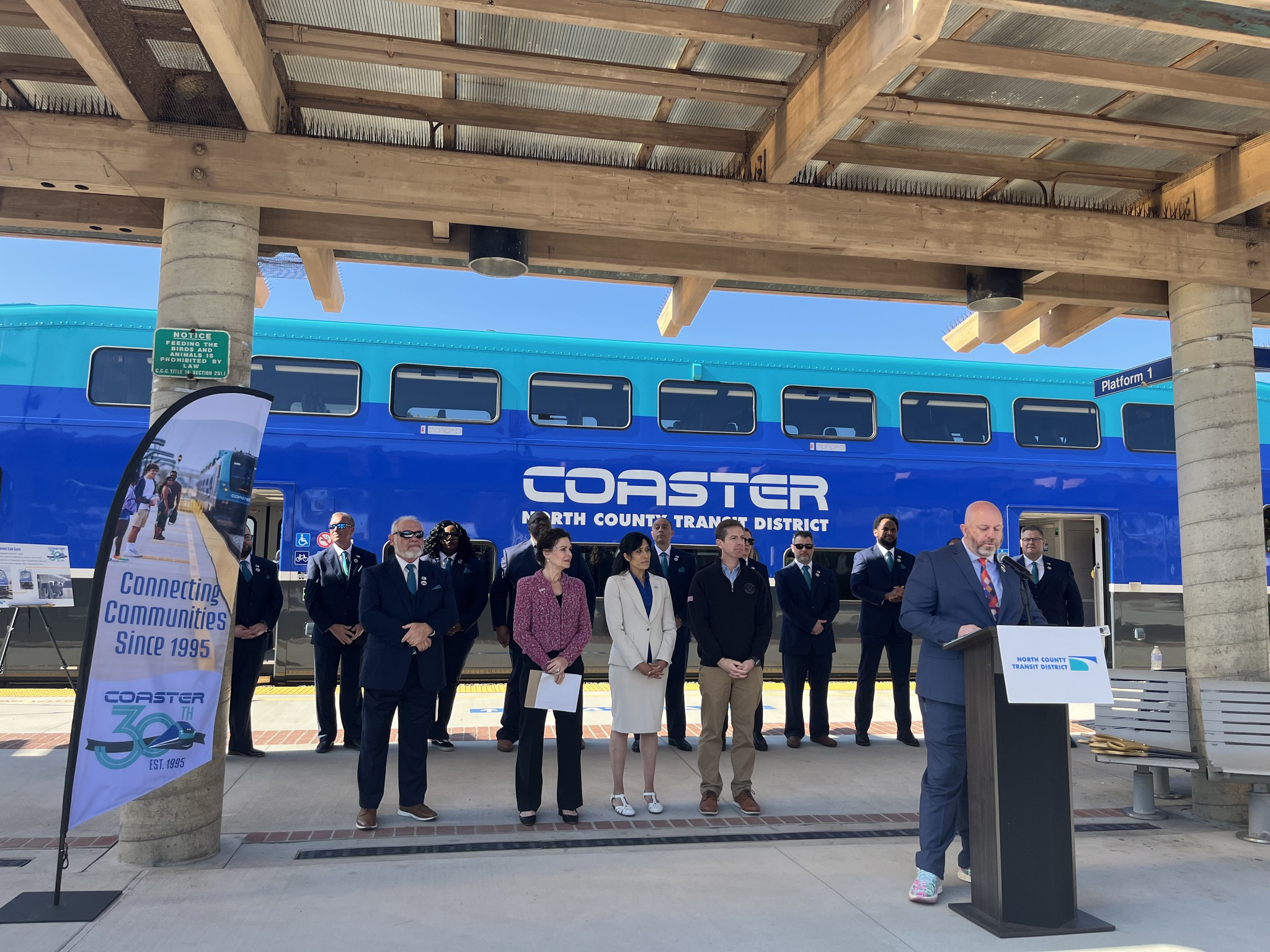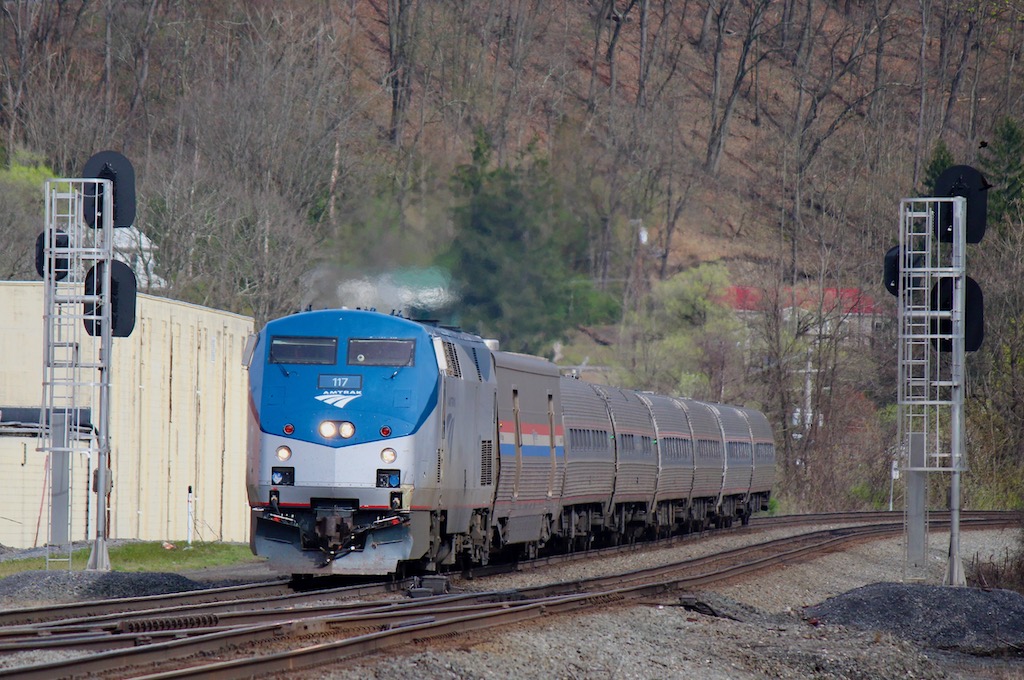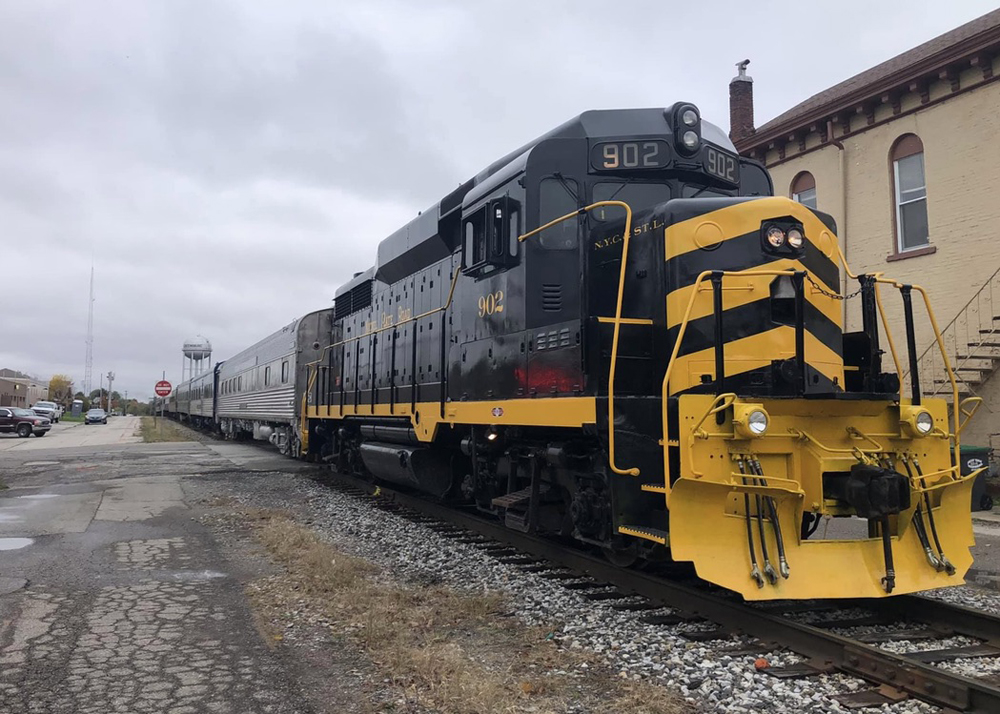BOSTON —Boston-area mayors called for expanded service at a Monday meeting of the board overseeing the Massachusetts Bay Transportation Authority.
Boston Mayor Marty Walsh called for more frequent service on the Fairmount line, as well as higher overall frequency through a proposal that would electrify MBTA routes. The State House News Service reports that the MBTA is considering a proposal to run eight additional trains daily on the Fairmount line, which was launched to offset the “Big Dig” project, the 16-year tunnel project to reroute Interstate 93.
Walsh called for legislators to find a new dedicated source of funding for public transit to cover the cost of electrifying the MBTA system.
Other mayors addressing the Fiscal and Management Control Board included Thomas McGee of Lynn and Carlo DeMaria Jr. of Everett, asking for service to their communities. DeMaria noted that 70 commuter trains pass through Everett daily, but none stop in the community.















Thee trouble with capital improvements is that they don’t last. The rule of thumb is a forty-year life – like Milwaukee’s Marquette Interchange that crumbled to concrete dust in about that amount of time. On my recent trip back to Quincy I was shocked at the mega-money that has been poured into the Quincy – Braintree extension of the Red Line after it was completed. Since I remember well when it was being built I always think of Red Line extension to Braintree as “new”. It isn’t new.
One can argue if the Red Line stations were shoddily built or if the passage of time overtook them. Either way, the rebuild cost dwarfs the original cost.
Then we get into access for the disabled. Count the number of transit or rail stations for London to Chicago to Boston to New York (and add in commuter rail, long-distance rail, etc), that were built before anyone ever heard of wheelchair access. If one station needs wheelchair access, they all do. Start the price at $10 Million per station and go on up to the sky – there is no limit. Where is that money coming from? The fare doesn’t pay enough to operate the train, let alone pay for the station. I saw a small-town rail station in rural England being refitted for wheelchair access – at an enormous price and this was in open country where construction is the simplest. Fine, great, can you imagine how many more stations there are? A disabled person getting on that train in rural Northumberland will travel to York or Durham or Edinburgh where a handicap retrofit won’t happen in his lifetime.
Then when the wheelchair elevators are installed, that doesn’t end it. Each elevator has to be tested, repaired and maintained (and ultimately replaced) until time ends.
I think that Mr. Armstrong has it mostly correct. I get what you say Charles but like you point out things aren’t as simple as they were back in 1964. Nor are they as inexpensive. I recognize that government has taken run-down systems and made them viable. Not only in Boston but elsewhere too. I support commuter rail because it operates the way a railway should. That is, frequent, relatively speedy and mostly reliable service. That didn’t always happen under private ownership. Equipment costs were going up, union demands were unreasonable and government meddling was increasing. All of this caused investors to spend their money elsewhere. So the government stepped in and admittedly things improved. The rundown NHRR “wash boards” became sleek Metro North M-8s (or whatever they are called.
Now all the MBTA can do is talk about expansion. They cannot even keep what they have in decent repair. Trains are cancelled frequently, the fare and ticket collection system is from the 1970s, North Station is as bad as Penn Station and that is being generous. Locomotive breakdowns are frequent and air conditioning malfunctions are a regular thing in the summer. Personal experience: There was an exhibit on ocean liners at the Peabody and Essex Museum in Salem that I thought would be good. I took the Downeaster to North Station intending to connect with a particular commuter rail train to Salem and walk to the museum. Well, as is usual, the Downeaster was late into Boston so I missed the connection and caught the next one. Well this limited my time at the museum so rather than take a train that would get me to North Station with another behind it for protection I decided to take the last train that would get me to North Station in time to catch the Downeaster. Waiting at the unstaffed Salem station my train was on the train status board, until it wasn’t. With no notice or comment my train was cancelled and I had to catch the next one which arrived in Boston too late for the Downeaster. The next train to Portland wasn’t until 10:30 or so with an arrival in Portland after midnight and then I had to drive an hour further north to my home. So, I walked from North Station to South Station (I avoid public transit when I can) and boarded an on time, air conditioned, clean and comfortable Concord Coach. There are departures once an hour and the trip time is 35 minutes less than the train.
So now I take the bus whenever I need reliable transportation. The train was stuffy and smelled. The train crew was trying hard but there were too many passengers for them to sell tickets to all of them and still collect all the fares. Some rode for free. I wasn’t one of them but if I had sat a few rows back I would have gotten my ride for free. So when I hear of more unneeded expansion by the T, I can’t help but wonder why they don’t try and become more reliable and efficient first. But then again, the union runs the T and more service means more jobs and more dues and pay in the pockets of the union bosses so efficiency is not on the top of their list of improvements.
Building a station for commuter rail service in Everett is a no brainer. Probably really cost effective too.
And the Fairmount line should be turned into a rapid transit line. It runs through some poor neighborhoods that could use better access to downtown (right now it’s once an hour). Also a low cost, no brainer. It would be an ideal candidate for DMUs or electrification with EMUs.
Mr McGuire, give the voters a choice between needed services and low taxes. Just don’t let politicians who cut taxes and the complain about non functioning government persist. This is our country and our government, and I would like to keep it that way.
People who want an economical government and economical taxes get neither in the end.
The trouble is they need to finish fixing and upgrading the system before adding in new and expanded services. The next trouble is the users complain about the rates going up and instead want free service which will not fix a thing. As for electrifying all the heavy rail runs that would cost additional billions and I suspect NIMBY opposition to seeing power lines and having them near their homes.
ROBERT – Pardon me for showing my age, I was around when the late Governor Endicott Peabody signed legislation (1964 I believe) changing the former MTA, 14 cities and towns, to the MBTA, 74 cities and towns. A lot of good came of this, a whole lot. Failing suburban bus systems (Middlesex and Boston Street Railway, Eastern Massachusetts Street Railway) were absorbed into the “T”. Subway extensions to Braintree, Medford and Alewife were built. The Braintree extension turned Quincy and Braintree from less desirable towns into go-go suburbs.
Commuter Rail on the B&M and the New Haven was preserved. Commuter rail on the B&A was hugely expanded. The Old Colony trains, entirely discontinued earlier, were brought back in service. The Silver Line was built along with the massive new Airport Station on the Blue Line. The Orange Line through Roxbury and Jamaica Plain was rebuilt. This is of course not a complete list.
Since I was young and idealistic in 1964, what I didn’t realize was that adding sixty cities and towns was not just for expanded service but for a bigger and wealthier taxing area.
Now, as ROBERT posts, the piper wants to get paid. And paid more and more and more. The Green Line needs a complete do-over – start counting at a billion dollars, of which not the first dime is in the bank. Needed or not, electrification of commuter rail is coming. And as ROBERT would be fond of telling you, daily operations and needed maintenance come at a price, let alone capital expansion.
Do I have the answer? No, I don’t. But on my recent trip back home to the south suburbs (Quincy and nearby) I wished I was the same 17-year-old kid who so admired Governor Peabody and I wished things were as simple as they seemed in 1964.
These mayors should be careful of what they wish for. They may get it. Remember, these expansions cost money, a lot of it. And guess who is going to have to pay. That’s right, the taxpayers who just happen to be their constituents and voters.